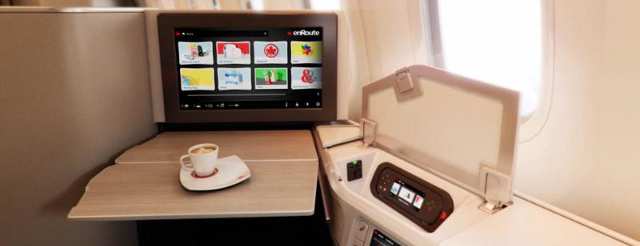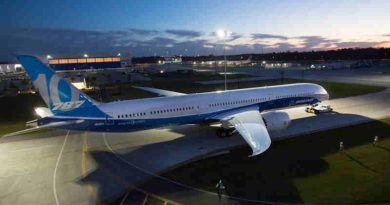United Airlines’ Dreamliner Getting Ready to Fly
United Airlines announced Thursday that Boeing completed the final assembly of the airline’s first 787 Dreamliner Wednesday evening, finishing the first major step in the aircraft’s production.
United will be the first North American carrier to take a 787 delivery, with plans to introduce the first of 50 Dreamliners into revenue service in 2012, says the company.
While in final assembly, the aircraft moved through four factory positions, including the final aircraft body join, landing gear installation, weight-on-wheels testing and installation of interior components and systems.
[ Also Read: Hugh Jackman and Virgin Fly Real Steel Plane ]Over the next several months, the aircraft will move to the next phase of completion, which includes final cabin configuration, installation of engines and painting.
Earlier, United Continental Holdings announced that it is converting to paperless flight decks and deploying 11,000 iPads to all United and Continental pilots.
The electronic flight bags (EFB) replace paper flight manuals and provide pilots with paperless aeronautical navigational charts through an iPad app. (Read: United Airlines’ Paperless Flight Deck with iPad)
Boeing will configure United’s first 787 with 36 seats in BusinessFirst, 63 seats in Economy Plus and 120 seats in Economy. The aircraft’s use of light-weight composites, together with more electric systems, modern engines and improved aerodynamic design, allows it to fly farther, faster and more efficiently.
[ Also Read: Delta Offers In-Flight Wi-Fi, Entertainment Options ]Customers will experience greater comfort with improved lighting, bigger windows, larger overhead bins, lower cabin altitude and enhanced ventilation systems, among other passenger-friendly features, the company informs.
United Continental Holdings’ subsidiaries Continental and United each ordered 25 Dreamliners. With expanded range capabilities, greater fuel efficiency and superior operating economics, the 787 will allow United to target new long-haul markets and replace older, less-efficient widebody aircraft.






